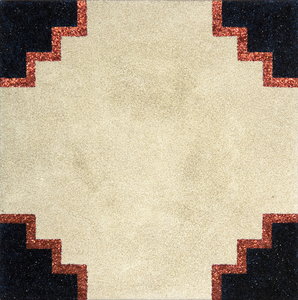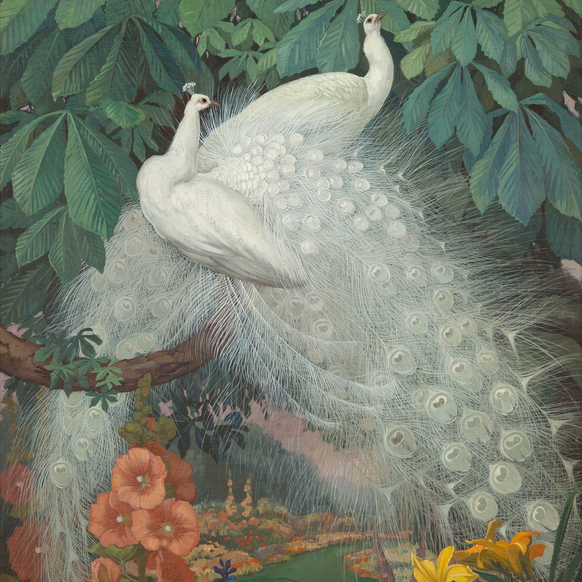MARY CORSE (b. 1945)
 In keeping with the West Coast’s unique brand of Minimalism, a contrast to its starker East Coast counterpart, Mary Corse adopted light as the primary subject in her exploration of visibility and perception. Like the work of her Southern California contemporaries such as Larry Bell, Robert Irwin, and James Turrell, Corse’s shimmering canvases are experiential pieces that stimulate a heightened sensory awareness. Corse mixes tiny glass microspheres into her paint before brushing it on the canvas, creating luminescent surfaces that capture a range of evanescent light effects. Her compositions seem to shift with different viewing angles and lighting conditions; up close each monochromatic white painting appears flat, but from a distance silvery geometric arrangements of bands come into view. Corse has noted that her paintings are not reflective, but rather “create a prism that brings the surface into view; creating a space that actually isn’t there.”
In keeping with the West Coast’s unique brand of Minimalism, a contrast to its starker East Coast counterpart, Mary Corse adopted light as the primary subject in her exploration of visibility and perception. Like the work of her Southern California contemporaries such as Larry Bell, Robert Irwin, and James Turrell, Corse’s shimmering canvases are experiential pieces that stimulate a heightened sensory awareness. Corse mixes tiny glass microspheres into her paint before brushing it on the canvas, creating luminescent surfaces that capture a range of evanescent light effects. Her compositions seem to shift with different viewing angles and lighting conditions; up close each monochromatic white painting appears flat, but from a distance silvery geometric arrangements of bands come into view. Corse has noted that her paintings are not reflective, but rather “create a prism that brings the surface into view; creating a space that actually isn’t there.”
Born in Berkeley in 1945, Mary Corse earned her BFA from the University of California, Santa Barbara in 1963 before receiving her MFA from the Chouinard Art Institute in Los Angeles in 1968. A Los Angeles-based artist aligned with the male-dominated Light and Space movement of the 1960s and 70s, Corse emerged as one of the group’s significant names while facing challenges of both geography and gender. Her work has been featured in solo and group exhibitions across the country, including shows at the Solomon R. Guggenheim Museum in New York and the Museum of Contemporary Art in Los Angeles. Corse has been the recipient of several prestigious honors and awards throughout her career, most notably a New Talent Award from the Los Angeles County Museum of Art in 1967 and the Theodoran Award from the Guggenheim Museum in 1971.




